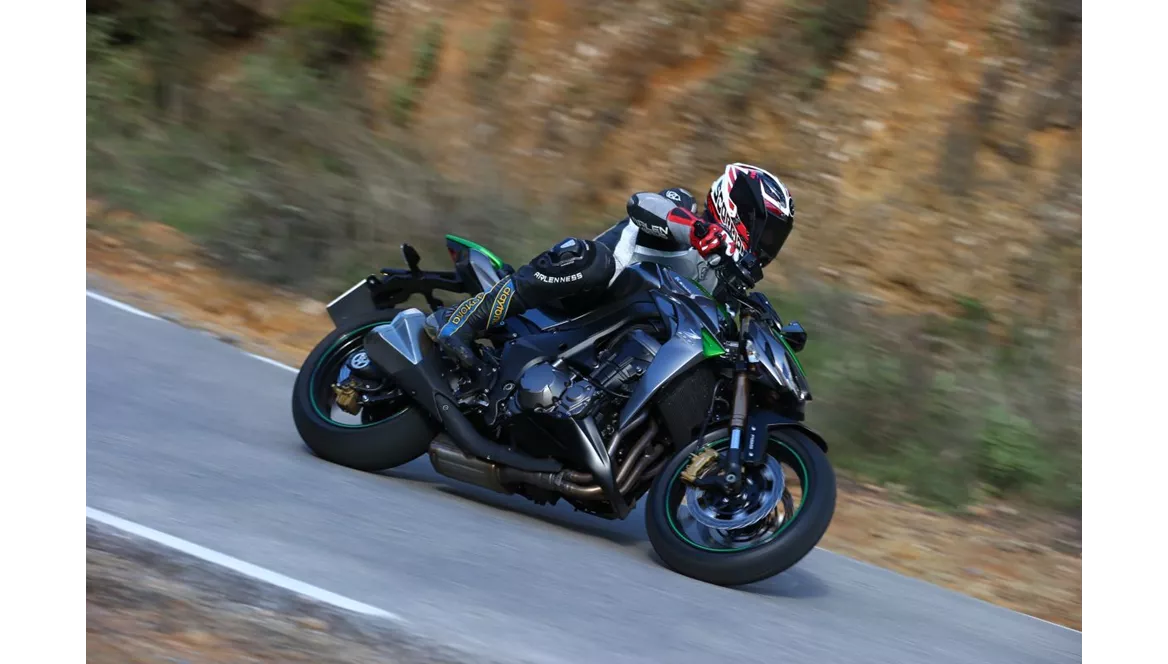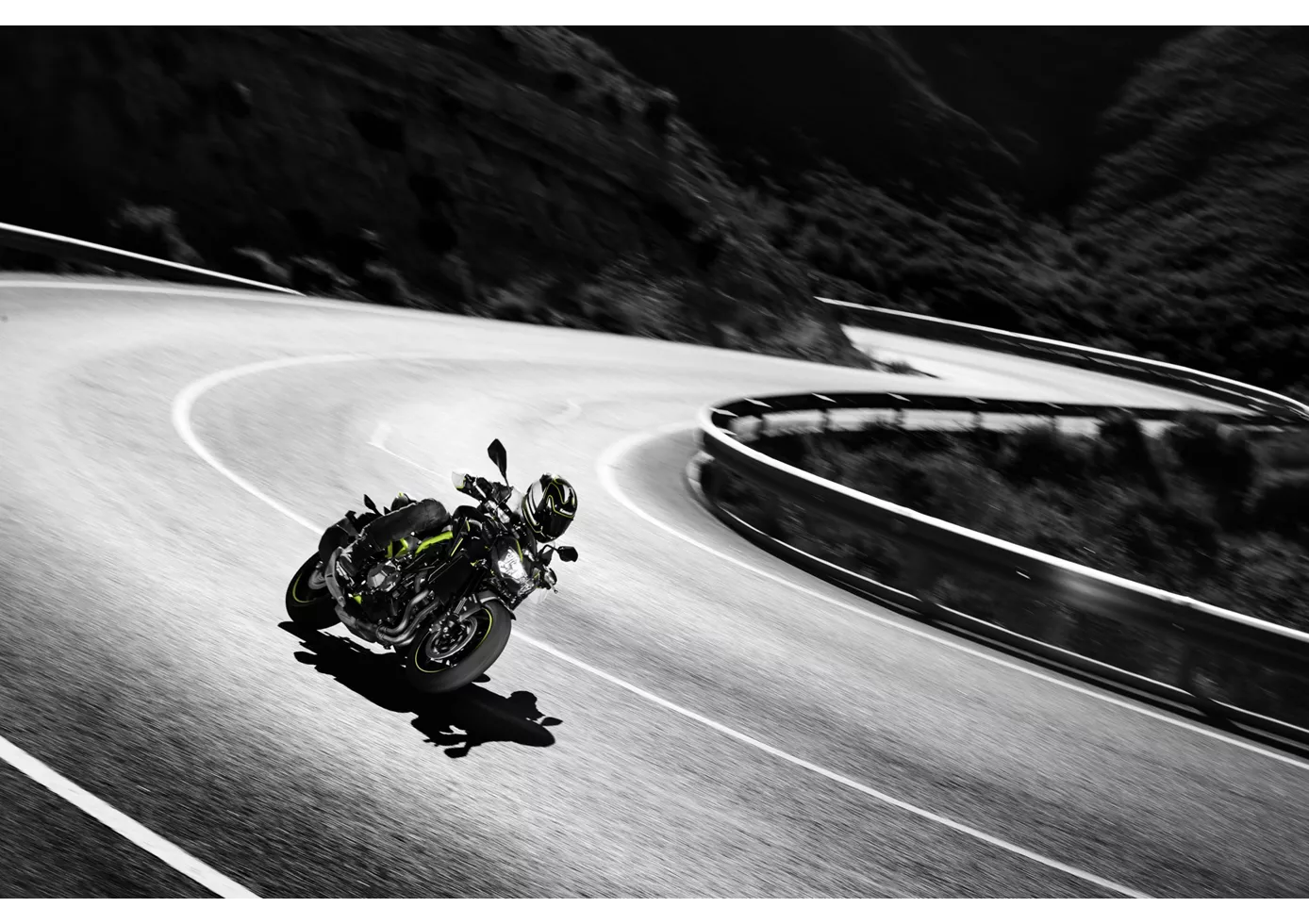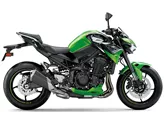Kawasaki Z1000 2014 vs. Kawasaki Z900 2018

Kawasaki Z1000 2014

Kawasaki Z900 2018
Overview - Kawasaki Z1000 2014 vs Kawasaki Z900 2018
The Kawasaki Z1000 model year 2014 and the Kawasaki Z900 model year 2018 are both naked bikes with similar engine types, in-line 4-cylinder engines with liquid cooling. However, there are several differences between the two models.
In terms of engine power, the Kawasaki Z1000 2014 has a higher output with 142 horsepower compared to the Kawasaki Z900 2018 which has 125.4 horsepower. The Z1000 also has a higher torque rating of 111 Nm compared to the Z900's 98.6 Nm. This means that the Z1000 may offer more acceleration and top speed compared to the Z900.
Both bikes have a double cradle frame, but the Z1000 has an aluminum frame while the Z900 has a steel frame. The choice of frame material can affect the overall weight and handling characteristics of the bike. Aluminum frames are generally lighter and offer better handling, while steel frames provide more rigidity and stability.

Kawasaki Z1000 2014
The suspension setup on both bikes is similar, with upside-down telescopic forks at the front. However, the Z1000 offers more adjustability with compression, preload, and rebound adjustments for both the front and rear suspension. The Z900, on the other hand, only has preload and rebound adjustments for the front and rear suspension.
In terms of braking, both bikes have double disc brakes at the front with four-piston calipers. The Z1000 features radial and petal technology for its front brakes, while the Z900 only has petal technology. This means that the Z1000 may offer better braking performance and heat dissipation compared to the Z900.
The dimensions and weights of the two bikes are also slightly different. The Z1000 has a slightly shorter wheelbase of 1435 mm compared to the Z900's 1450 mm. The seat height of the Z1000 is also slightly higher at 815 mm compared to the Z900's 795 mm. Both bikes have the same front tire width of 120 mm, but the Z1000 has a wider rear tire at 190 mm compared to the Z900's 180 mm.

Kawasaki Z900 2018
In terms of strengths, the Z1000 2014 is praised for its sophisticated design, pleasant handling, pleasant sound, and good brakes. On the other hand, the Z900 2018 is praised for its powerful and silky engine, great sound, sharp and sporty look, low seating position, and easy handling and maneuverability.
However, there are also some weaknesses for each model. The Z1000 2014 has a high purchase price compared to its competitors, such as the S1000R. The Z900 2018, on the other hand, lacks traction control and the knee angle may be strenuous for tall riders during long rides.
In conclusion, while both the Kawasaki Z1000 2014 and the Kawasaki Z900 2018 are powerful naked bikes with similar engine types, there are several differences between the two models in terms of performance, design, and features. The Z1000 offers higher power and torque, more adjustability in suspension, and a slightly wider rear tire. The Z900, on the other hand, has a powerful and silky engine, a sharp and sporty look, and easy handling and maneuverability. Ultimately, the choice between the two models depends on the rider's preferences and priorities.
Technical Specifications Kawasaki Z1000 2014 compared to Kawasaki Z900 2018
Pros and Cons in comparison
Pros and Cons in comparison
Kawasaki Z1000 2014

A great motorbike that convinces not primarily with facts, but with a positive riding experience and emotions.
Kawasaki Z900 2018

In the hotly contested naked bike segment, the Z900 plays right at the front. Above all, its engine is absolutely terrific, runs incredibly silky and offers rich power in all rev regions - as befits a Japanese four-cylinder. Its sporty, aggressive appearance matches this. It does without electronic bells and whistles, but still conveys a lot of confidence when chasing corners, braking and accelerating out of them. The low seat is especially beneficial for smaller riders, but taller riders might miss a flatter knee angle on long distances. The low weight and compactness make the Z900 particularly agile and easy to handle. A sporting cannon that is also extremely appealing in terms of price
Price Comparison Avarage Market Price Kawasaki Z1000 vs Kawasaki Z900
There are a few key differences between a Kawasaki Z1000 2014 and a Kawasaki Z900 2018. In terms of price, the actual average price of a Kawasaki Z1000 2014 is about 4% higher. A Kawasaki Z1000 2014 experiences a loss of 660 USD in one year and 490 USD in two years of ownership. This is offset by a loss of 640 USD and 520 USD for a Kawasaki Z900 2018. Compared to Kawasaki Z900 2018 there are less Kawasaki Z1000 2014 bikes available on the 1000PS.de Marketplace, specifically 12 compared to 55. It takes less time to sell a Kawasaki Z1000 with 75 days compared to 112 days for a Kawasaki Z900. Since model year 2005 1000PS.de editors have written 41 reviews for the Kawasaki Z1000 and 46 reviews for the Kawasaki Z900 since model year 2017. The first review for the Kawasaki Z1000 was published on 9/2/2002 and now has more than 5,800 views. This compares to more than 93,200 views for the first review on Kawasaki Z900 published on 11/11/2016.






















